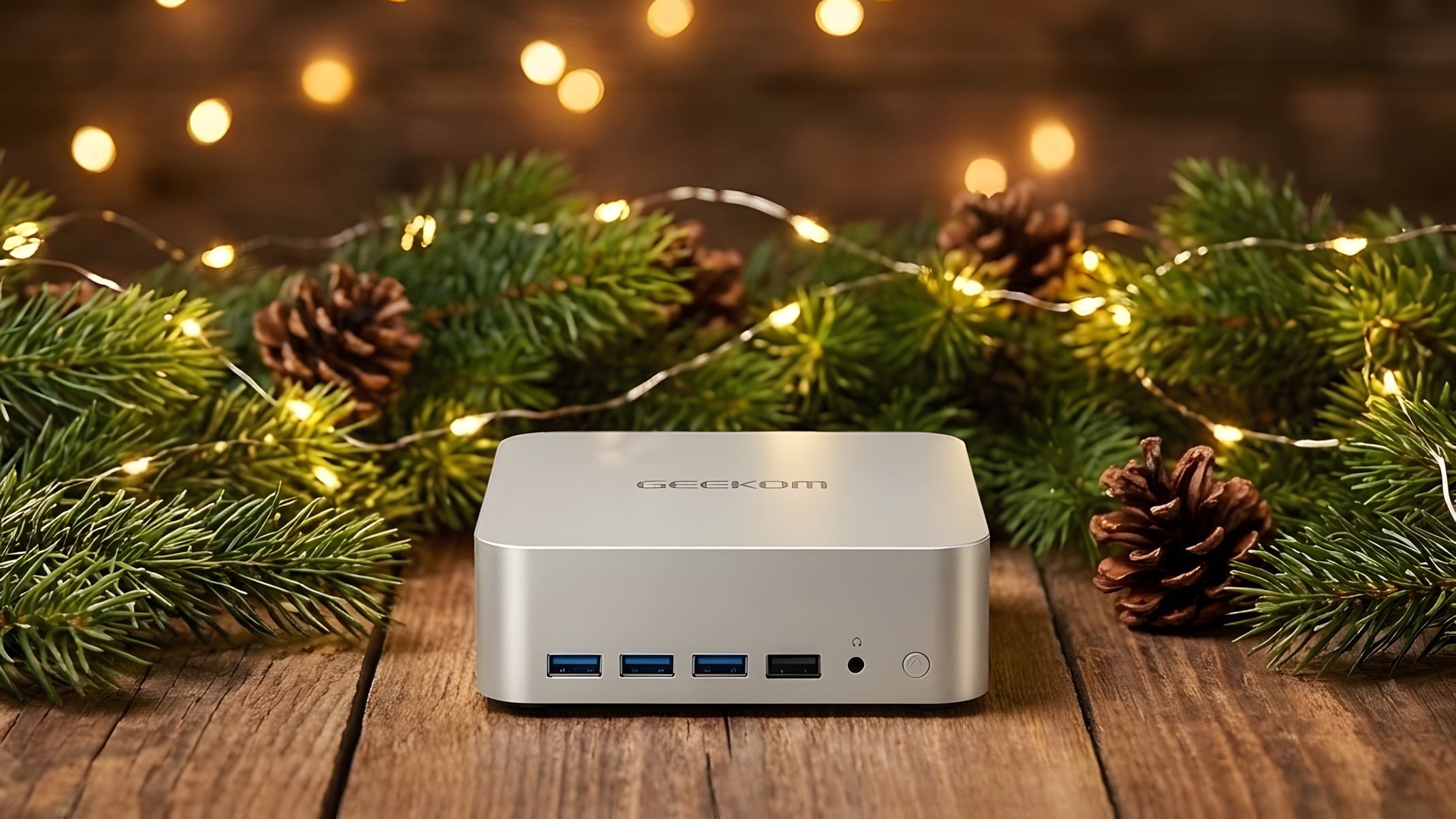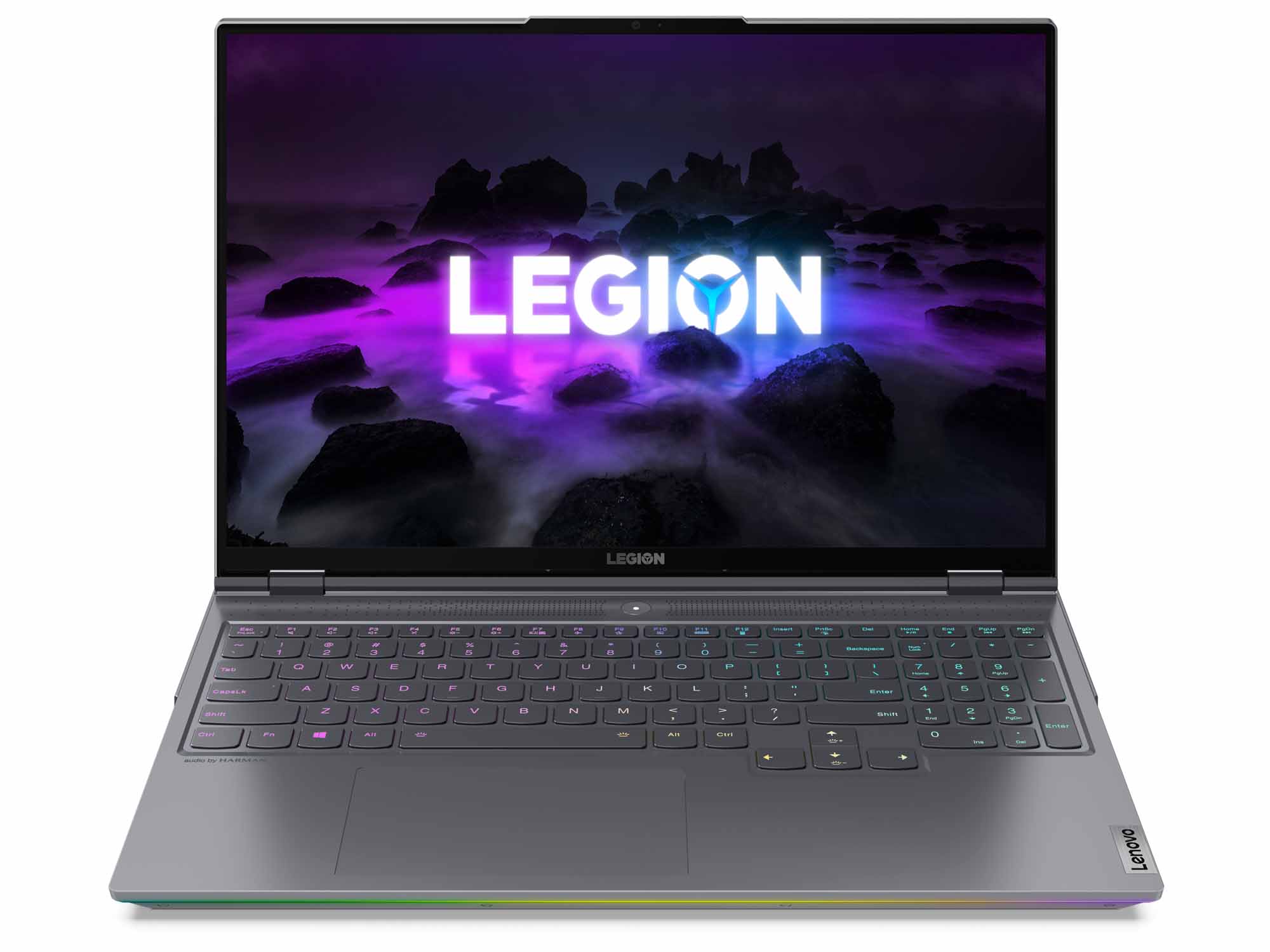
What you need to know
- Lenovo has revealed its refreshed lineup of Legion 7 and Legion Slim 7 laptops.
- New display options, better airflow, larger heat sink, updated Q-Control, and new AI Engine are all expected.
- The latest mobile AMD CPUs and NVIDIA GPUs will be available in the Legion 7 and Legion Slim 7.
- The Legion 7 is expected to start at $1,670 and launch June 2021, while the Legion Slim 7 is expected to launch May 2021 (pricing TBD).
Lenovo's high-end lineup of Legion 7 laptops is getting a refresh, announced during CES 2021. Both the standard Legion 7 and the Legion Slim 7 have some exciting new features and design changes, which should appeal to gamers.
Perhaps the best change for this new generation's Legion 7 is a 16-inch display with boxier 16:10 aspect ratio. The chin below the display has been mostly removed, and you ultimately have more screen real estate to work with. It has a 2560x1600 (2K) resolution for crisp visuals, and the 165Hz refresh rate and 3ms response time make everything look buttery smooth. That's not all: you're also getting 100% sRGB color, VESA DisplayHDR 400 certification, Dolby Vision, and NVIDIA G-Sync.
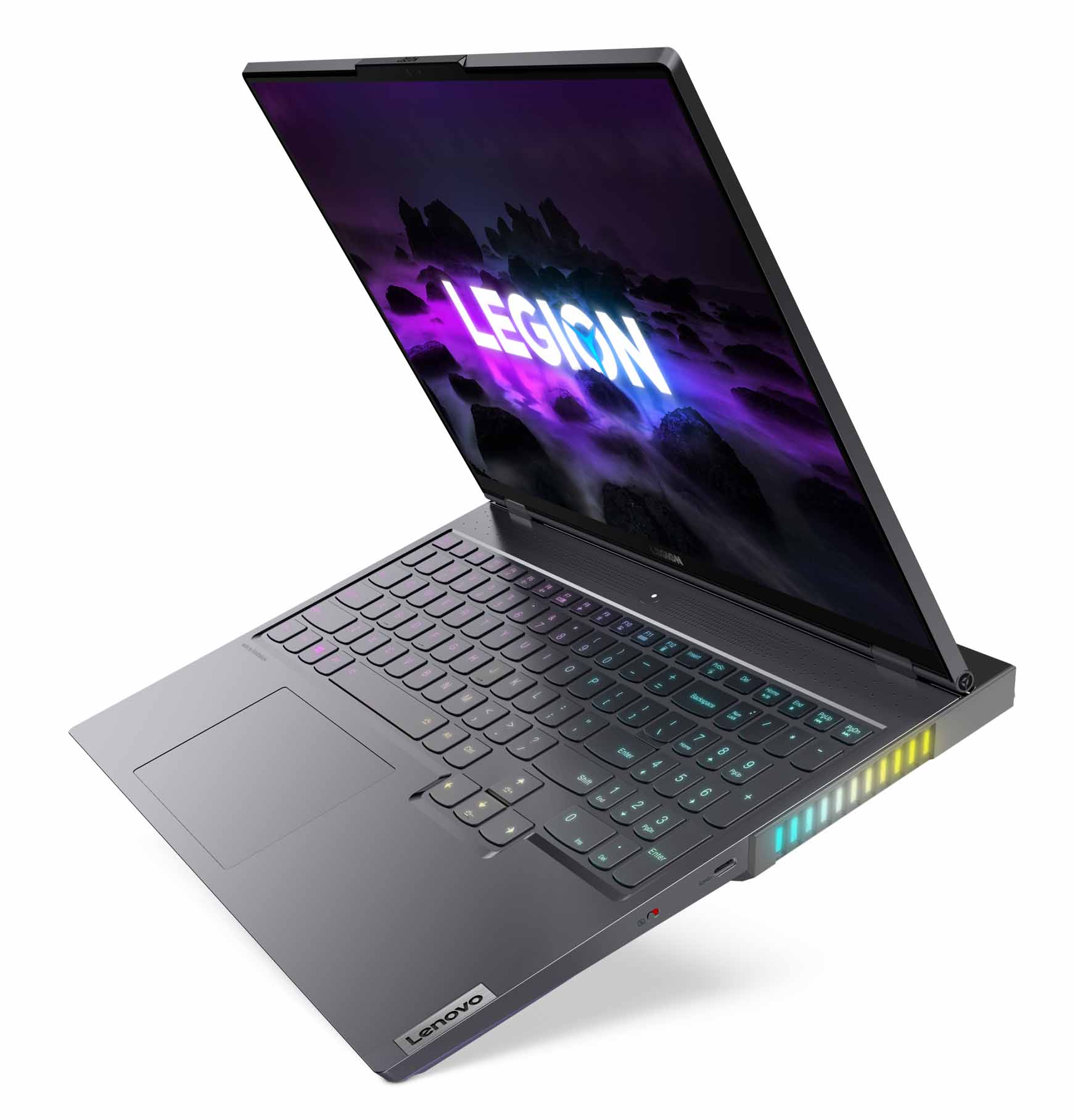
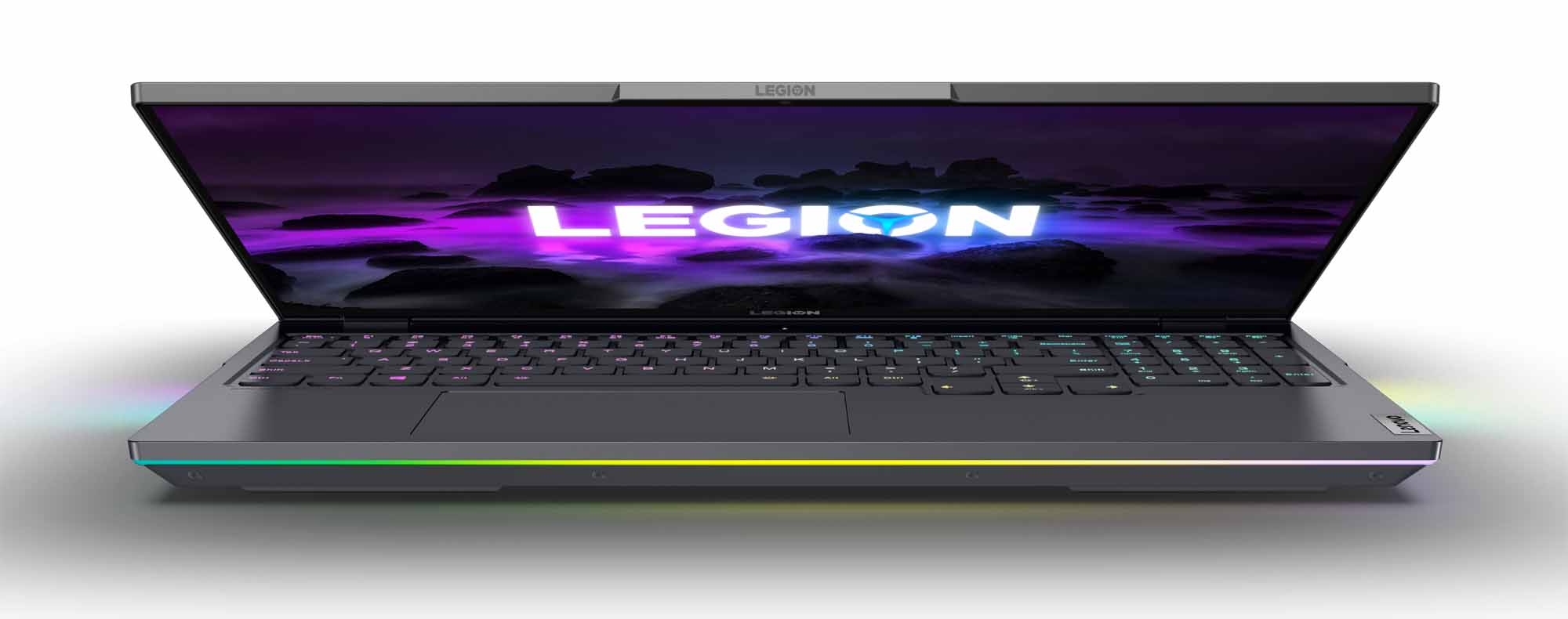
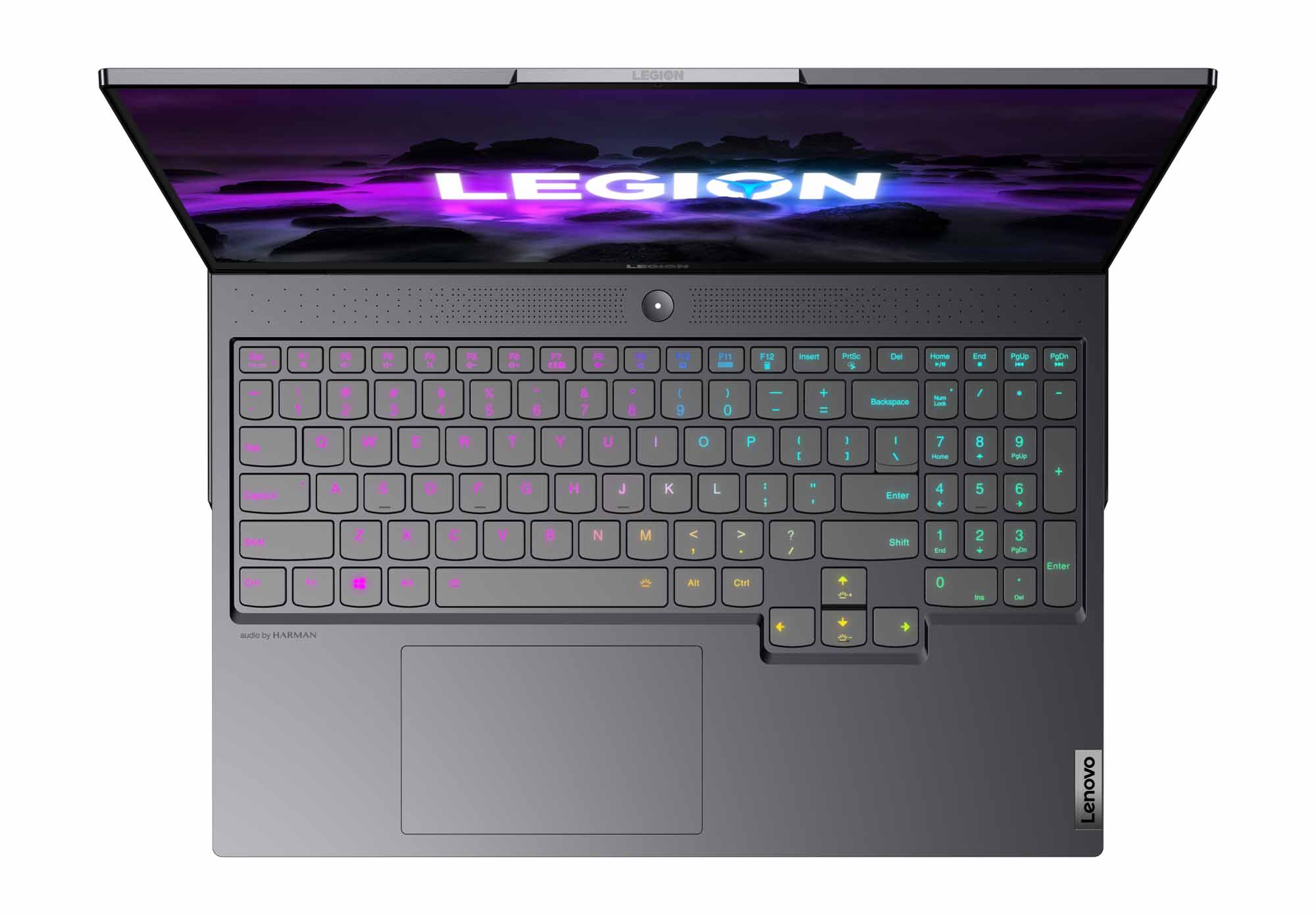
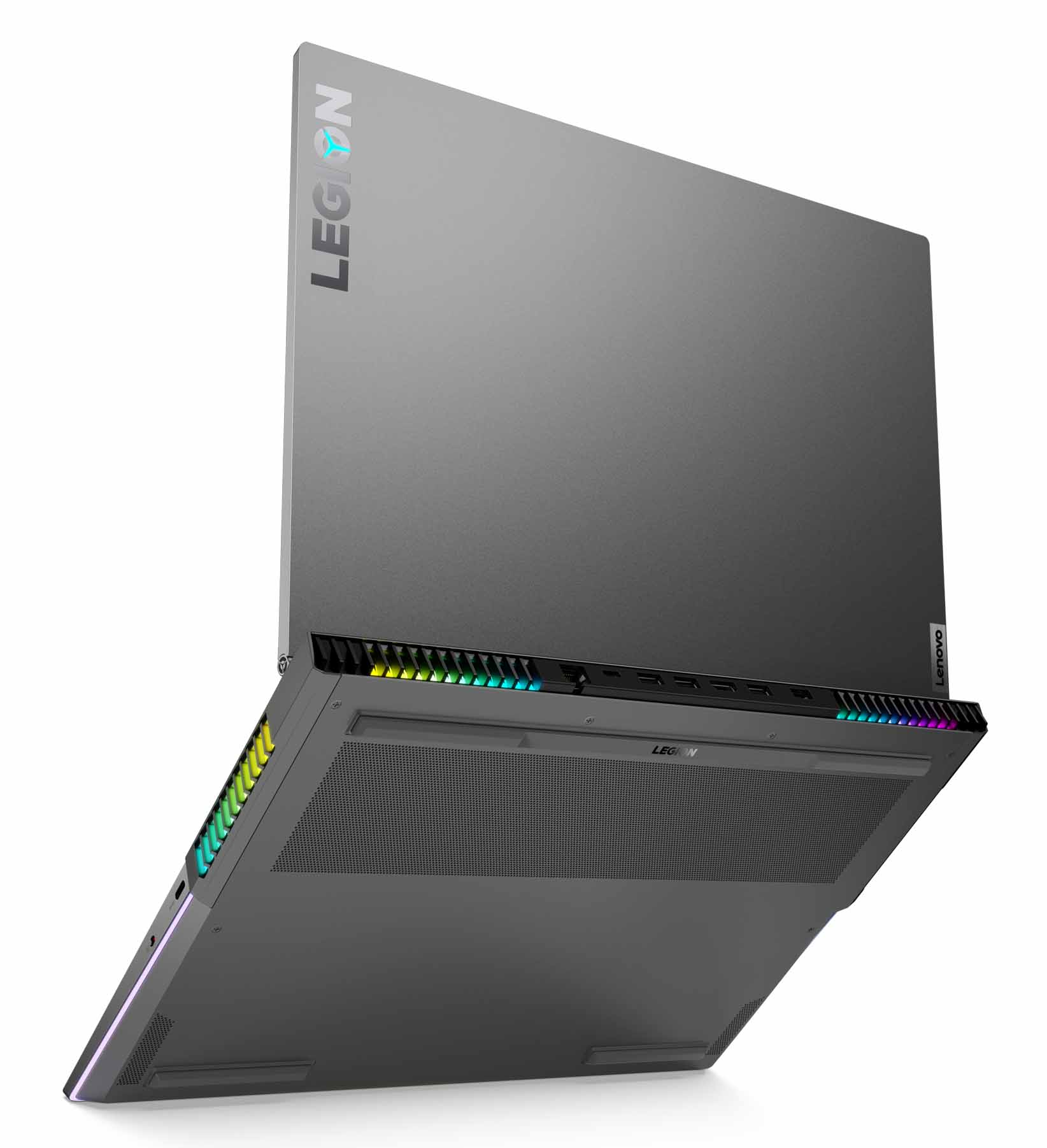

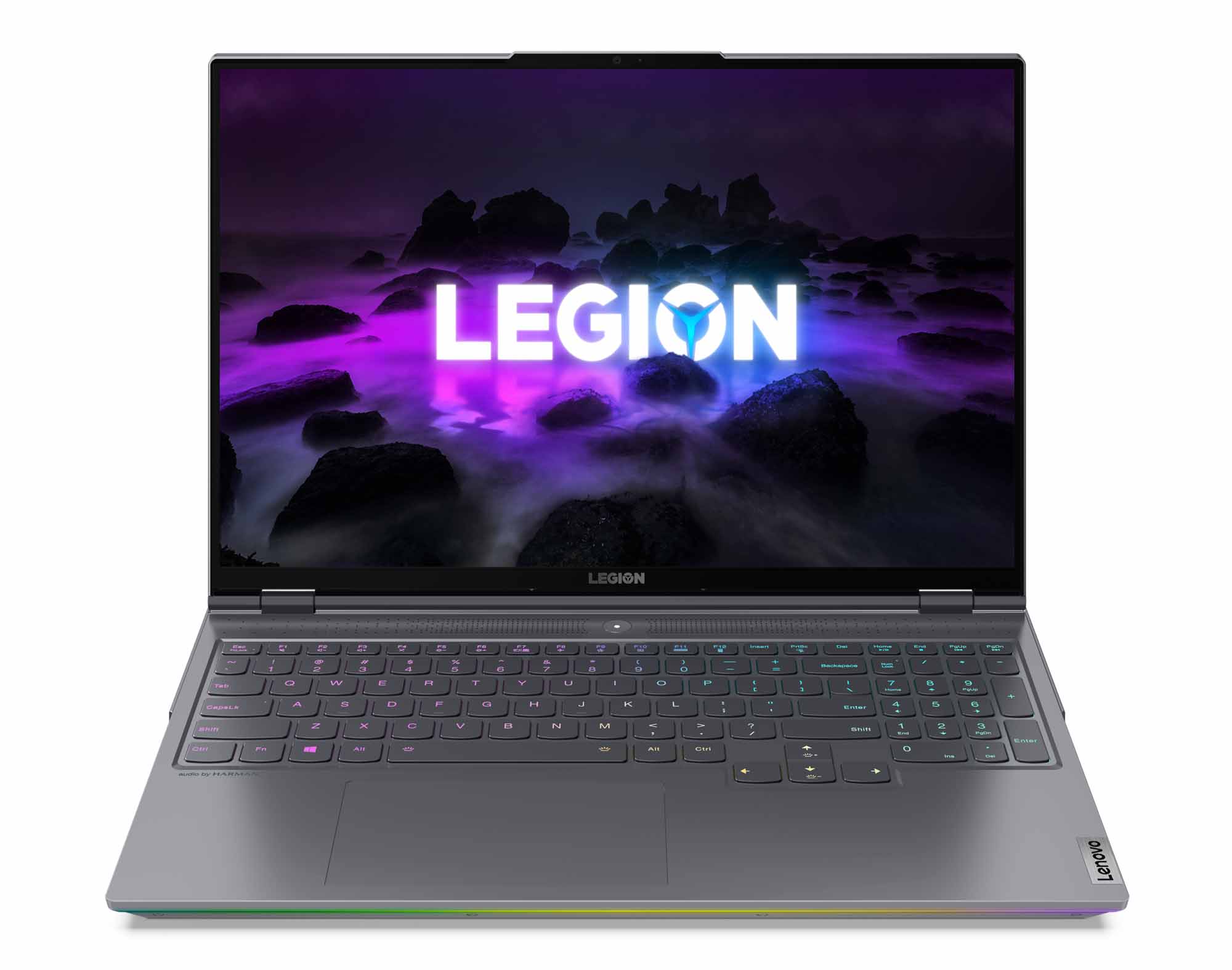
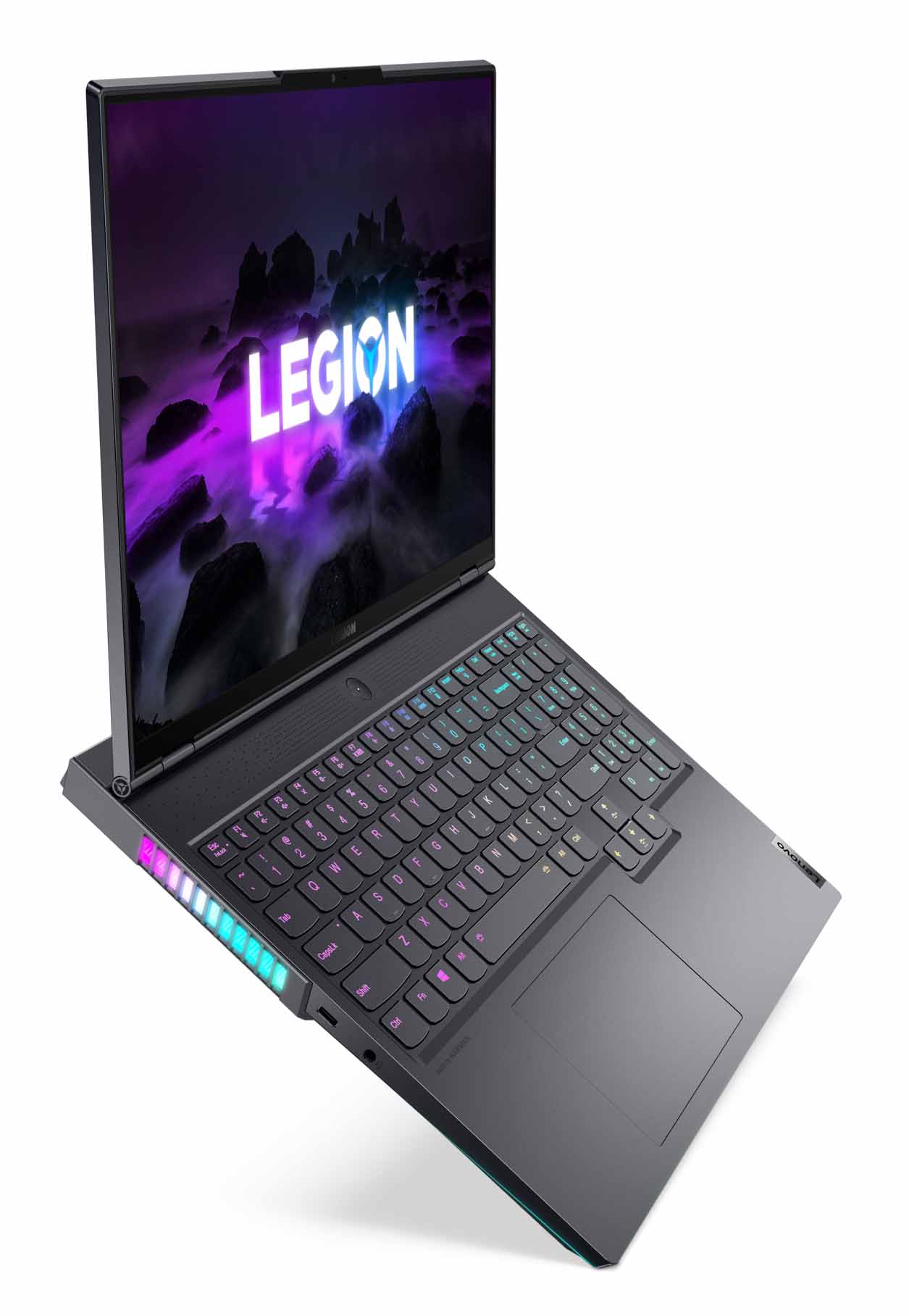
All this display is backed up by up to an AMD Ryzen 9 processor (the latest Mobile chips expected to be announced soon), as well as next-gen NVIDIA mobile GPUs. This laptop is stacked. Rounding out features for the Legion 7 is Killer Wi-Fi 6 wireless connectivity, Coldfront 3.0 cooling with larger vapor chamber, and webcam shutter for added privacy.
| Category | Lenovo Legion 7 |
|---|---|
| OS | Windows 10 Home Windows 10 Pro |
| Processor | Up to AMD Ryzen 9 |
| RAM | Up to 32GB DDR4-3200MHz |
| Graphics | NVIDIA GeForce RTX |
| Storage | Up to 2TB M.2 PCIe NVMe SSD |
| Display | 16 inches 2560x1600 16:10 aspect ratio 165Hz, 3ms, 500 nits 100% sRGB VESA DisplayHDR 400 Dolby Vision NVIDIA G-Sync |
| Ports | Three USB-C 3.2 Three USB-A 3.2 HDMI 2.1 Ethernet 3.5mm audio |
| Audio | Dual 2W Harman speakers |
| Connectivity | Killer Wi-Fi 6 AX1650 Bluetooth 5.1 |
| Camera | Front-facing 720p E-Shutter |
| Keyboard | Corsair iCUE RGB |
| Battery | Up to 8 hours Rapid Charge |
| Dimensions | 14.01 x 10.27 x 0.79-0.93 inches (356mm x 261.04mm x 20.1-23.5mm) |
| Weight | 5.5 pounds (2.5kg) |
| Color | Storm Grey |
A Legion Slim 7 refresh is also in order at CES 2021, especially important for those who want the thinnest possible chassis. There are two 15.6-inch displays to choose from, each with a 16:9 aspect ratio. The high-end version comes with a 3840x2160 (4K) resolution, 60Hz refresh rate, Dolby Vision, and 100% AdobeRGB color, while the FHD version has a 165Hz refresh rate, 100% sRGB color, and Dolby Vision.
It's all powered by AMD's latest Ryzen mobile processors and NVIDIA's latest NVIDIA RTX mobile graphics, meaning you're going to get series performance. The Slim 7 is the thinnest and lightest gaming laptop Lenovo has ever created, weighing in at about 4.2 pounds (1.9kg). It's available with a 720p camera and privacy shutter, Wi-Fi 6, Coldfront 3.0 thermals, fingerprint reader, and optional Corsair iCUE keyboard backlight.
Both laptops feature Lenovo's TrueStrike gaming keyboard, updated Lenovo Q-Control with new Intelligent Mode profile, Nahimic Audio speaker tuning by SteelSeries, and a new Lenovo Legion AI Engine that helps all hardware and software work together for easy overclocking and power management.
The Lenovo Legion 7 is expected to start at about $1,670 and should release June 2021. As for the Legion Slim 7, no price is so far listed. Expect it to be released May 2021.
All the latest news, reviews, and guides for Windows and Xbox diehards.

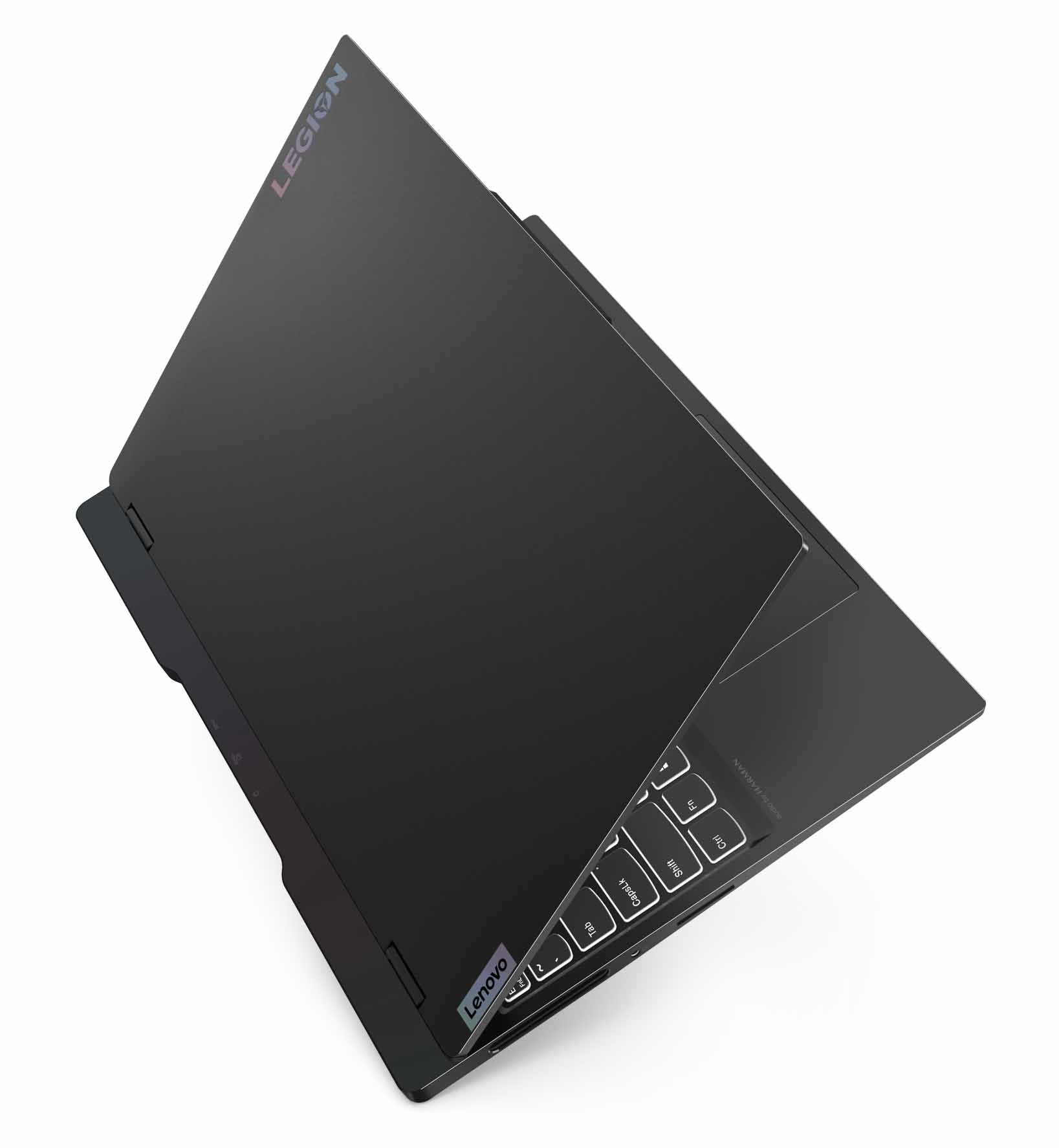
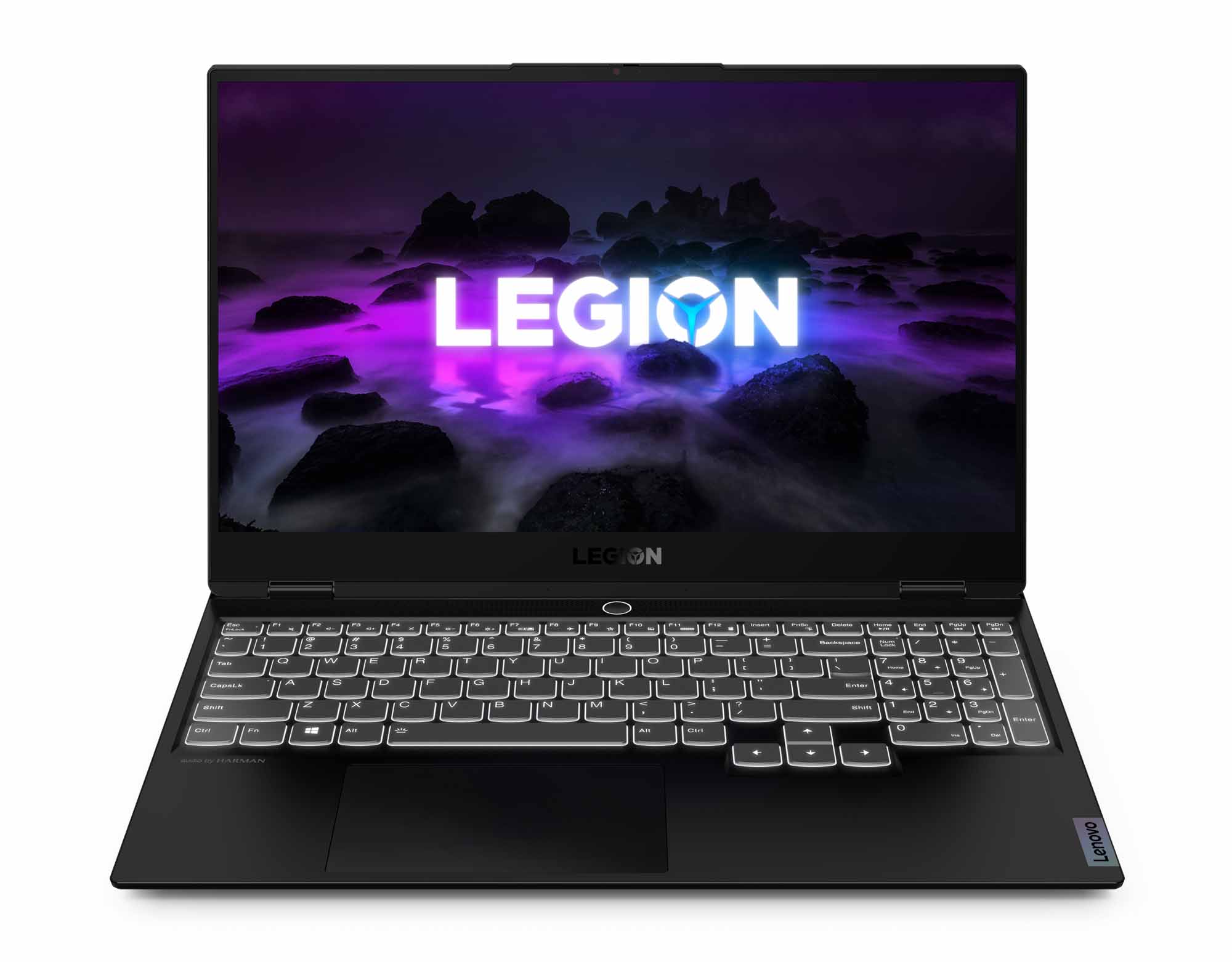

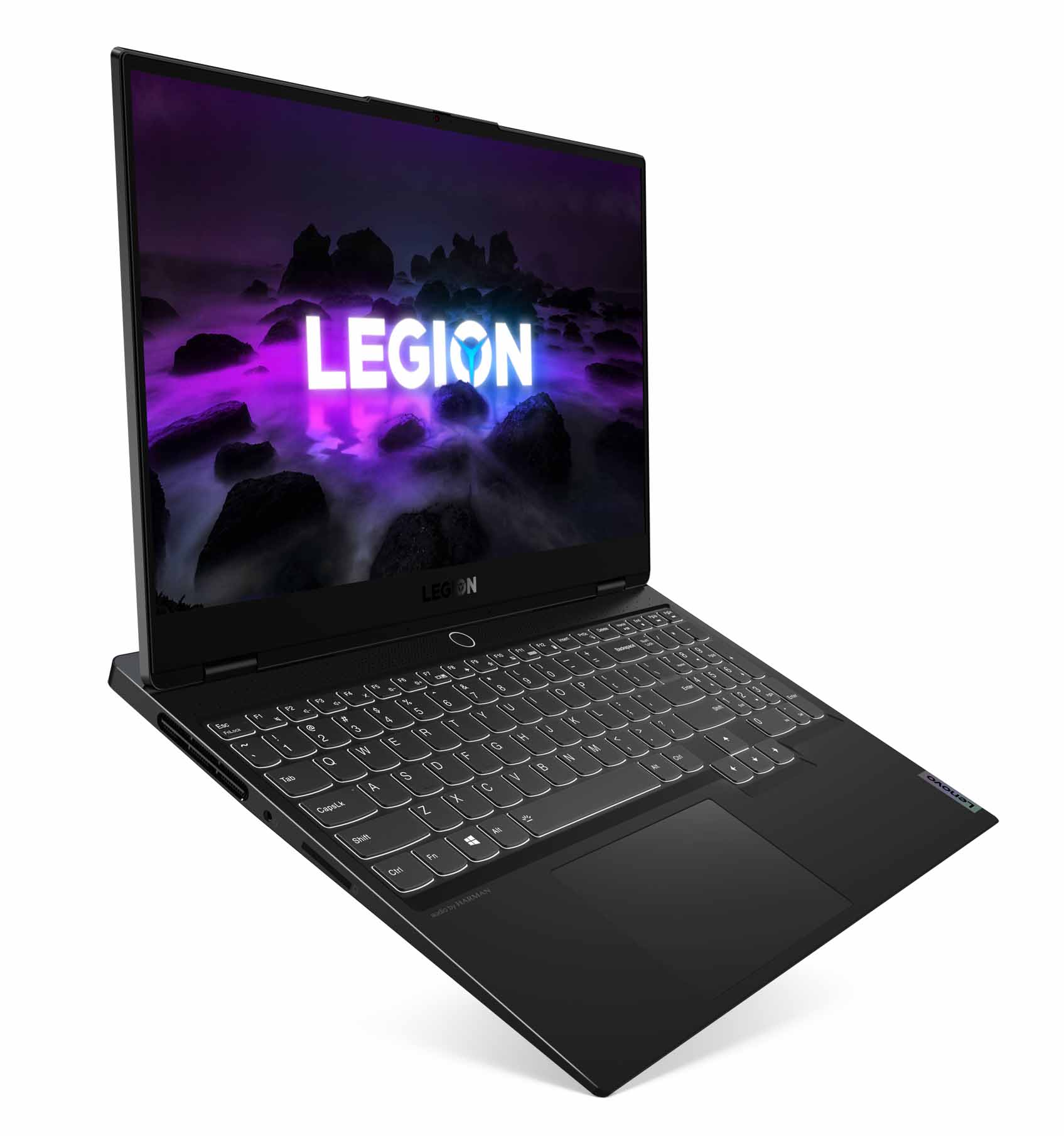
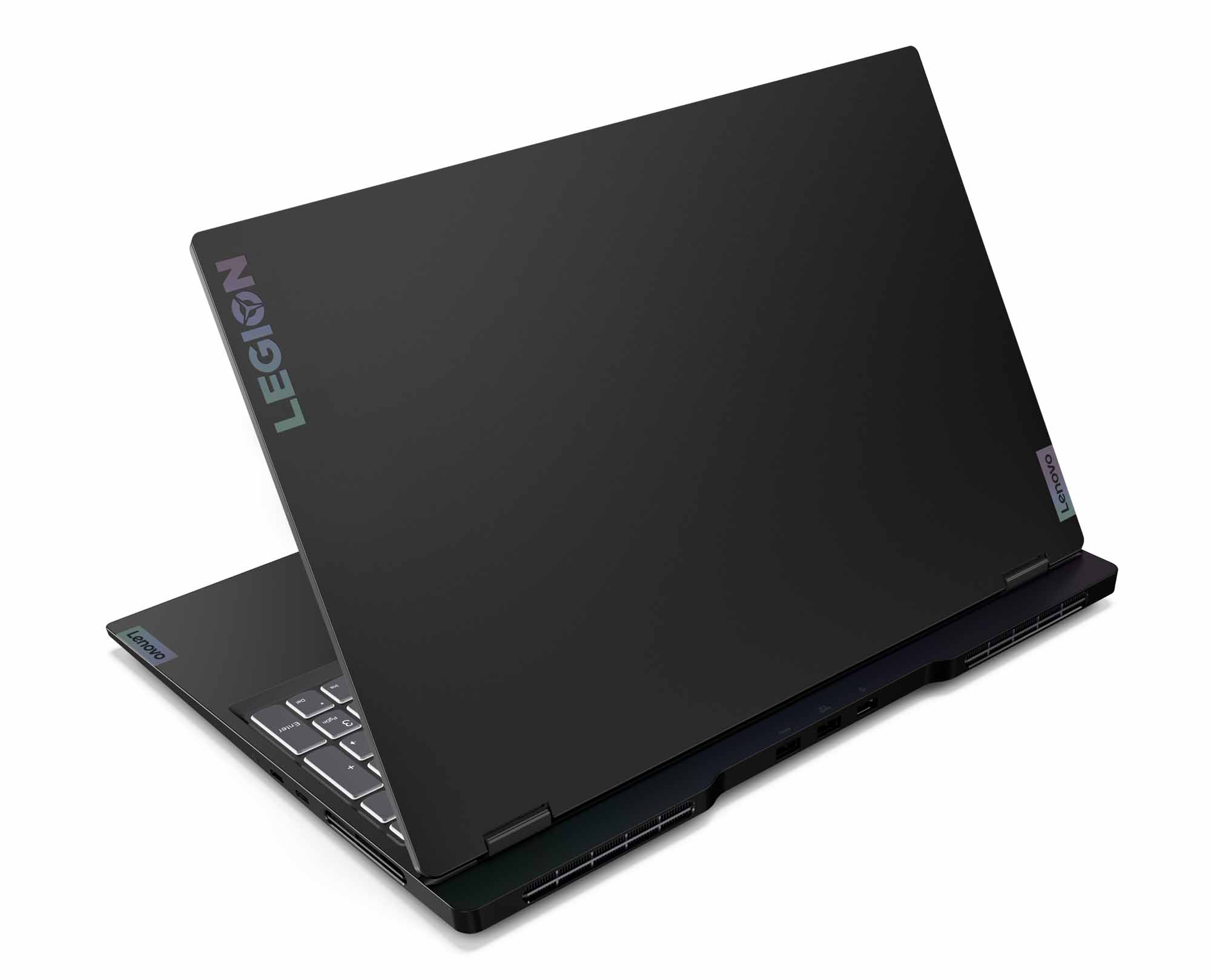

Cale Hunt brings to Windows Central more than nine years of experience writing about laptops, PCs, accessories, games, and beyond. If it runs Windows or in some way complements the hardware, there’s a good chance he knows about it, has written about it, or is already busy testing it.
